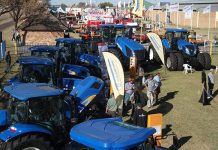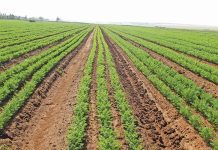The University of KwaZulu-Natal’s School of Bioresources Engineering and Environmental Hydrology, in conjunction with the University’s Bioenergy Research Group, hosted a biodiesel workshop at the Ukulinga research farm in Pietermaritzburg in August. Some of SA’s leading experts on biofuel and bioenergy shared their expertise. Interested parties came from as far as the Western Cape. Biofuel is a hot topic, thanks to rising petroleum costs and concerns about pollution. The workshop explored how farmers can produce diesel by growing and processing their own crops.
Dr Alan Hansen from the University of Illinois presented a US perspective on biofuel for use in engines, listing the biofuel options including ethanol and biodiesel. He told us about an initiative aimed at having US farms, forests and ranches produce 25% of US energy requirements by 2025. Current US biodiesel production capacity is 1,5 billion litres, expected to grow to 3,4 billion litres by year’s end – total US diesel consumption is 227 billion litres a year. Concerned about the different properties of biodiesel and petroleum diesel, US engine manufacturers would like to see use limited to a 5% blend until more experience is gained. They feel they’d eventually accept a 20% blend. Dr Hansen gave another talk about commercial biodiesel production, outlining problems like byproduct disposal and safely handling the dangerous chemicals the process involves. He quoted interesting statistics. 100kg of soya beans can yield 10ℓ oil, which can produce 10ℓ biodiesel. Byproducts include methanol, which the process can re-use, spent catalysts, which can be converted into fertiliser and glycerine, for which there’s no ready market.
However, Dr George Tchebycheff, from the UKZN School of Biochemistry, Microbiology and Plant Pathology, discussed another biofuel – biogas – and related the long history of biogas production from waste digesters. Digesters may be able to use the glycerine produced in biodiesel manufacture. There are over 2 000 such plants in Germany alone. David McElwee of environmental impact assessors Simpson, Ryder and Associates said biodiesel production is fairly simple, but warned about possible pitfalls, particularly if the product does not meet specifications. He’d built a biodiesel manufacturing plant, from very basic components, on a Zambian farm. The local front Darryl Melrose of Biodiesel SA, one of the first local biodiesel companies, outlined his operation’s history. He currently sells a Sasol diesel/biodiesel blend, made using recycled cooking oil from fast-food outlets. was very cautious about the viability of producing biodiesel from field crops at current prices.
A lan Hill, chief technician at the Ukulinga research facility, demonstrated the process converting vegetable oil into biodiesel. The procedure can be replicated at various levels of production, depending on the investment in plants and equipment, feedstock availability and viability in terms of production costs. W orkshop coordinator Dr Daniel Ciolkosz presented a fascinating paper on biodiesel production from algae. “Like many concepts forming the basis for renewable energy technology, the idea of using micro algae as a fuel source is older than people realise,” he said – in the early 1950s, algae were considered as a possible source of methane gas. “Much work remains to be done to maximise








